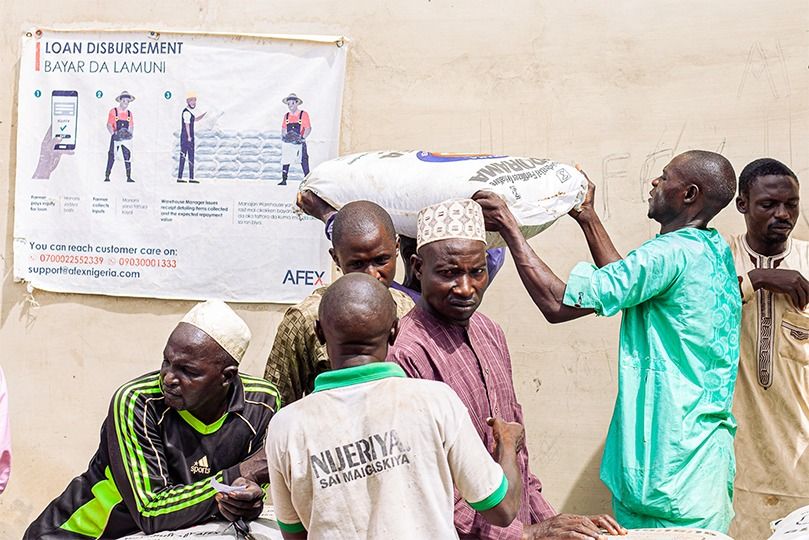Reading time:5 min read
Commodity Exchanges and Smallholder Farmers
Who runs the market? Producers or Consumers?
In theory, markets reflect the interaction between supply and demand. Producers offering goods and consumers shaping demand through their choices. But in the context of African agriculture, the reality is more complex. For smallholder farmers, who make up the bulk of food producers across the continent, the market often feels like a distant, unpredictable force rather than a responsive partner. Instead of influencing pricing, timing, or trade terms, these farmers operate on the margins. They trade informally, under pressure, and with limited access to meaningful bargaining power. So, who really runs the market? The answer lies in how markets are structured and who gets to participate with agency.
The Smallholder Farmers Reality
Smallholder farmers feed nations; however, in unstructured markets, they face a range of disadvantages: poor access to market information, lack of price transparency, weak infrastructure, and limited access to storage or finance. Their produce is often sold at harvest time under pressure, with few options for negotiation. Middlemen dominate transactions, setting prices and determining who trades, how, and when. In this environment, farmers are price takers rather than price makers. The result is a cycle of low returns, minimal reinvestment, and stagnant productivity that continues to stifle rural economic transformation.
To address these challenges, many post-World War II African governments established state-run marketing boards. These institutions were intended to centralise agricultural trade, stabilise prices, and enable smallholder farmers negotiate more equitably with large trading companies. In addition, they took on broader responsibilities such as distributing farm inputs, providing credit, collecting levies, and compiling national agricultural data. While the intent was developmental, in practice, excessive bureaucracy and an overemphasis on tax collection eroded their effectiveness. Farmers were frequently underpaid, and the system often reinforced the very inefficiencies it was meant to correct.
The Shift Toward Commodity Exchanges
In the 2010s, certain African countries began adopting market mechanisms long used in developed countries to reform agricultural marketing in their own economies. The proposed model linked together a variety of institutions, using a commodity exchange, which relied on a certified warehouse receipt system.
Commodity exchanges offer a practical this long-standing imbalance in market access. At their core, exchanges provide a transparent, rule-based platform for trading commodities, introducing structure where fragmentation once prevailed and building trust where opacity has been the norm. With centralized pricing, enforceable quality standards, and secure warehousing, exchanges help rebalance the power dynamic. Farmers no longer have to guess market prices or sell under pressure; instead, they participate in a system where supply meets demand in a competitive and predictable environment. The introduction of warehouse receipt systems further strengthens this model by allowing producers to access finance using their stored goods as collateral.
Central to this approach is the integration of certified warehouses and quality assurance mechanisms. These warehouses act as secure storage hubs where commodities are inspected, graded, and standardized. In exchange, farmers and traders receive warehouse receipts, which serve both as proof of ownership and as collateral for accessing finance. This not only safeguards product integrity but also fully integrates a functioning traceability system in the fragmented sector, while simultaneously creating formal credit channels to those who might otherwise be excluded from traditional banking services.
Importantly, smallholder farmers benefit from decentralized local depots where they can bring their harvests to be weighed, graded, and offered to multiple buyers in a competitive setting of a commodity exchange. This reduces reliance on middlemen, encourages better pricing, and increases market participation. In effect, commodity exchanges serve as the backbone of a reformed agricultural ecosystem-one that promotes fairness, unlocks value, and drives inclusive growth for all participants along the value chain.
Rebalancing Market Power
Perhaps the most significant impact of commodity exchanges is their ability to integrate smallholder farmers into formal markets. Through decentralised aggregation centres, farmers can now weigh, grade, and sell their produce closer to home. Multiple buyers compete for their commodities, which drives better pricing and improves liquidity. With access to secure storage, farmers gain the flexibility to delay sales until market conditions improve. Financing, once out of reach, becomes possible through warehouse receipts, enabling investment in seeds, tools, and inputs. This shift places the smallholder farmers at the centre of the agricultural value chain, not just as a producer but as a participant with real choices and market leverage.

Conclusively, the question, “Who runs the market?” does not have a single answer. The goal is to build systems in which both producers and consumers can engage fairly, transparently, and efficiently. Commodity exchanges such as Africa Exchange are not about tipping the scale from one group to another. They are about restoring balance. By providing smallholder farmers with access to infrastructure, finance, and a structured trading environment, AFEX is building markets that are more inclusive, more resilient, and better aligned with national development goals. In this renewed configuration, the market is no longer something that happens to farmers. It is something they actively participate in shaping.
